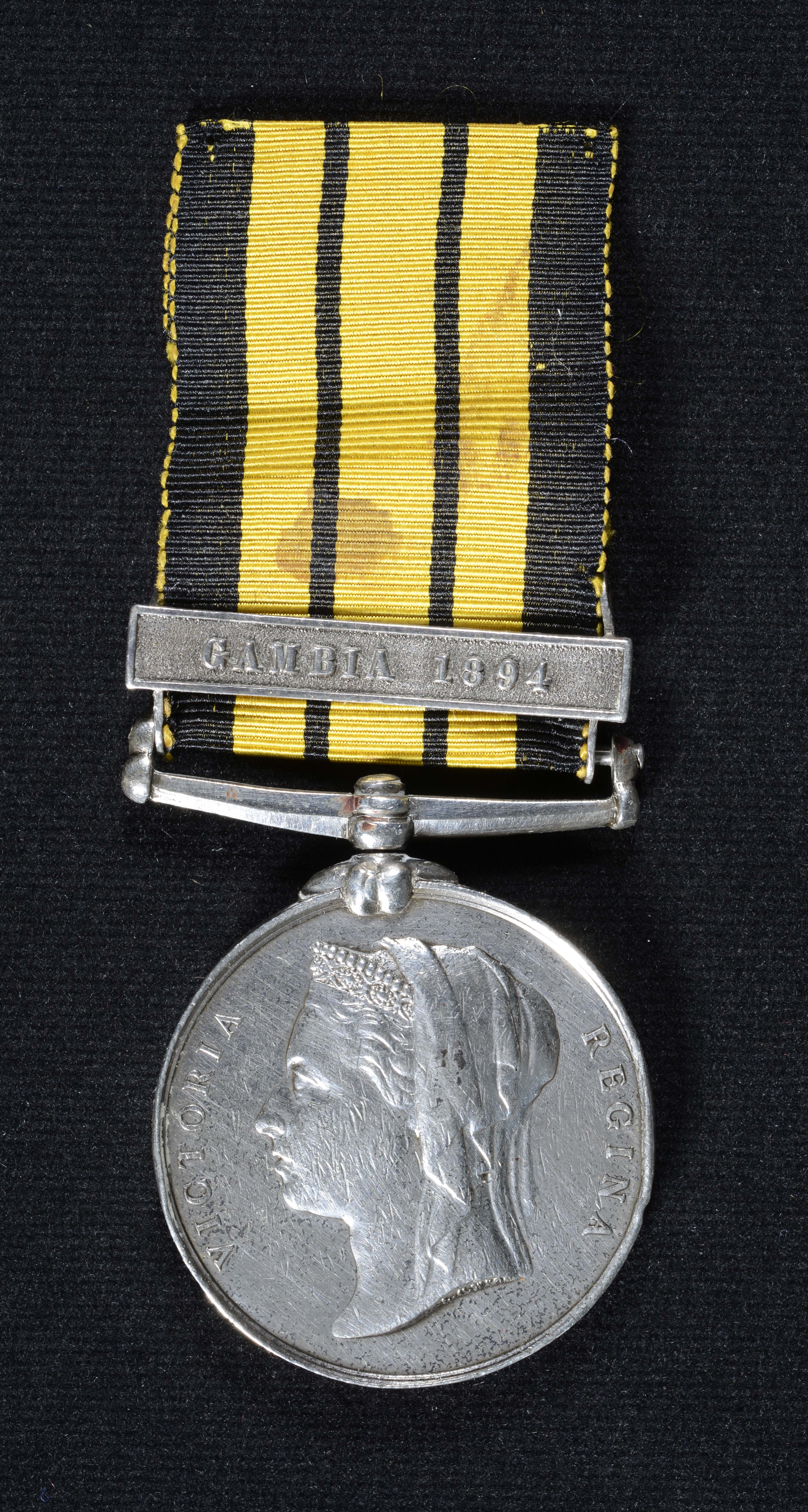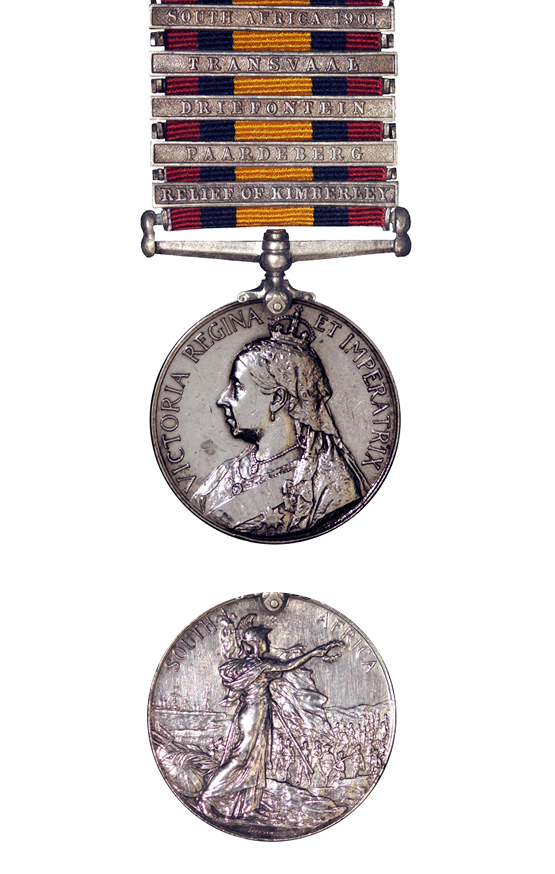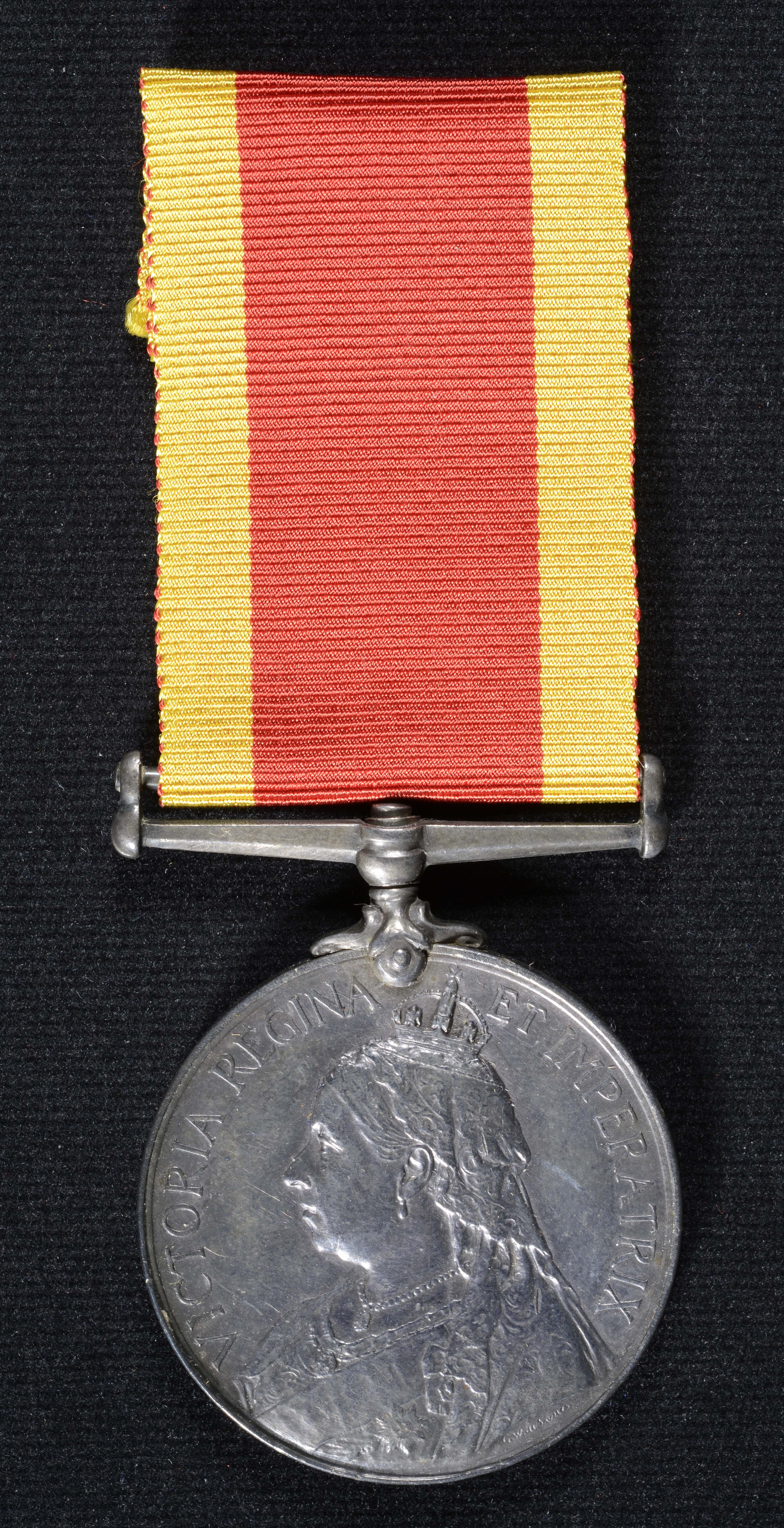

Display No. 2F
GARDINER, Thomas Richard Bury
Thomas Gardiner joined the Royal Navy when he was fifteen as a Boy. He trained in HM Ships St Vincent and Northampton, qualifying as an Ordinary Seaman in 1892. Gardiner’s first posting was to HMS Raleigh at the Cape of Good Hope and West Africa Station. While there he served in the anti-slavery operations off Gambia in February 1894. Gardiner was posted to HM Ships Penelope and Phoebe in South Africa for the rest of 1894, before returning to England. Gardiner served in the Channel Fleet over the next two years in HM Ships, Resolution and Jupiter. As well as spending a year in Crete as part of the Mediterranean Fleet in HMS Empress of India. In March 1898, Gardiner joined the crew of HMS Terrible, assigned to the China Station in 1899. The ship went via the Cape of Good Hope and served in operations in the South Africa War including the Relief of Ladysmith and Tugela Heights. Terrible arrived in Hong Kong in May 1900 and later took part in operations concerning the Boxer Rebellion at the Battle of Beijing (Relief of Peking) in 1900. Terrible returned to England in 1902.
Gardiner spent the next four years serving in British shore establishments or on harbour vessels. He was posted to HMS Triumph in the Channel Fleet in 1906 and while serving on that ship and having reached the rate of Petty Officer, he received his Long Service and Good Conduct Medal. Gardiner served in the Home Fleet in HMS Magnificent in 1909 before being posted to HMS Blenheim in the Mediterranean Fleet in August 1910. He remained with Blenheim for almost five years and served there during the early years of the First World War. Gardiner then spent a year in Greece attached to HMS Europa. He continued to serve in the area in HM Ships Grafton and Edgar before seeing out the last year of the war in British shore bases. He was discharged at the end of the war after nearly thirty years of service.
Awarded medal(s)
Medal Description [Left to Right]:
East and West Africa Medal

A campaign medal awarded for participation in minor campaigns that took place in East and West Africa between 1887 and 1900. A total of 21 clasps were awarded. The ribbon is yellow with black edges and two black stripes towards the centre.
The Queen’s South Africa Medal

The Queen’s South Africa Medal was instituted by Queen Victoria to recognise service in the Boer War in South Africa between 1899 and 1902. On her death in 1901, a new medal called the King’s South Africa Medal was struck bearing the effigy of King Edward VII. These medals were the first awarded to New Zealand servicemen for military service outside New Zealand. Twelve of the possible 26 clasps were awarded to New Zealand military personnel.
China War Medal 1900

A British campaign medal issued to British and Indian land and sea troops who served during the Boxer Rebellion in China: 10 June – 31 December, 1900. The ribbon is crimson with wide yellow edges. A total of three clasps were issued. These included the Relief of Pekin clasp which was awarded to British and Indian Army personnel and to men of the Royal Navy involved in the relief of the Legations in Peking, between 10 June and 14 August 1900. They were either part of the international relief force or Vice Admiral Edward Seymour’s Naval Brigade.
Royal Naval Long Service and Good Conduct Medal

Awarded to ratings who have served a minimum of 15 years in the Royal Navy (previously 21 or 10 years), the first version of this medal was instituted in 1831 and it is still issued to Royal Navy personnel today. It features the reigning monarch’s head on the obverse and HMS Victory on the reverse with the recipient’s details engraved or impressed on the edge of the medal. This medal was also issued to eligible personnel serving in the New Zealand Division of the Royal Navy from 1921-1941 and then to Royal New Zealand Navy personnel from 1941-1981. In 1985 a New Zealand Royal Navy Long Service and Good Conduct Medal was introduced bearing the exact same design.

